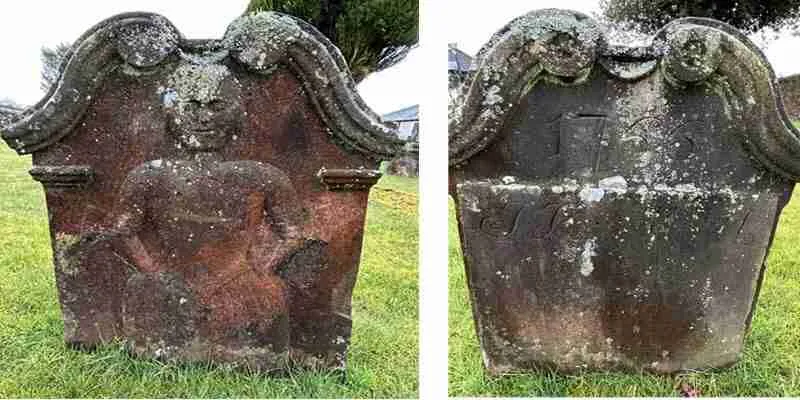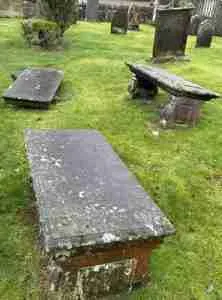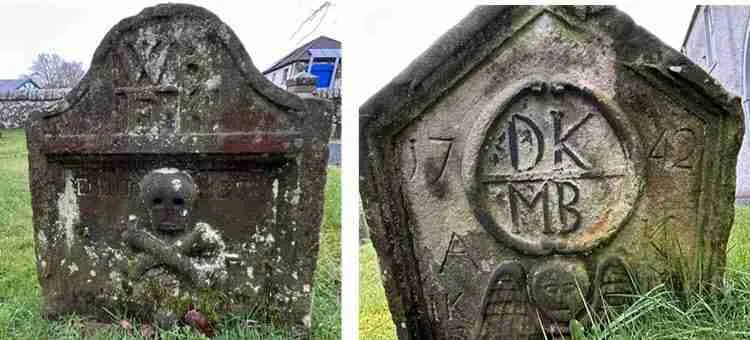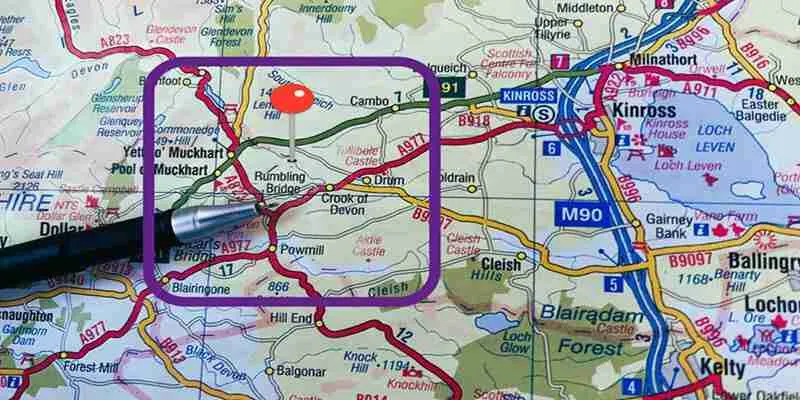 Rumbling Bridge is one of many hamlets located in Fossoway Parish nestled between Perthshire, Kinross-shire and Clackmannanshire, near the east of Scotland. It is such a cool name for a hamlet that I wanted to write about it as part of my ongoing search of Scottish parishes. Actually, my last post on a Scottish parish was Arngask Parish. So, did your ancestor come from Rumbling Bridge or one of the villages or hamlets in Fossoway parish?
Rumbling Bridge is one of many hamlets located in Fossoway Parish nestled between Perthshire, Kinross-shire and Clackmannanshire, near the east of Scotland. It is such a cool name for a hamlet that I wanted to write about it as part of my ongoing search of Scottish parishes. Actually, my last post on a Scottish parish was Arngask Parish. So, did your ancestor come from Rumbling Bridge or one of the villages or hamlets in Fossoway parish?
Rumbling Bridge and the Other Hamlets of Fossoway Parish
Fossoway parish has many little hamlets and villages that are worth mentioning – you never know …. your ancestor may have come from one of them …
- Rumbling Bridge is a wee hamlet near the Crook of Devon. It was named after a double bridge over the awe-inspiring gorge and the rumblings of the river Devon. The hamlet also once had a hotel which is now a nursing home.
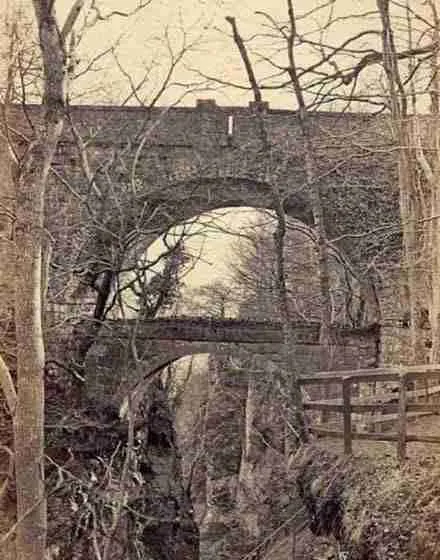
The lower bridge, built in 1713, stands as a testament to early bridge building. Its remarkable design with no parapets and 80 feet above the river bed would have been quite an engineering feat for its time.
In 1816, another bridge was built but this time over the existing one. Perhaps it was to help people cross the river without having to go downhill to reach the original bridge.
- Crook of Devon is the main village of Fossoway parish and it is known locally as the Crook. Its church serves the local parish. The village was once a bustling drovers’ route when highland cattle had to travel to lowland markets.
- Powmill is a village is locally known for its iconic Milk Bar, a great stop for delicious cakes. It too had a hotel but it is sadly dilapidated.
- Blairingone: In Gaelic, it is “Blàr-na-gobhainn”, which means “Field of the Smith,” or ‘Smithfield’. It was probably given this name because it used to be a base for making weapons of war. Importantly, the smiddy was conveniently located near a coal mine that helped feed the fire forges.
- Carnbo is a wee hamlet beside the Ochil Hills. It is interesting because it means hill (carn) and cow (bo) in Gaelic. The hamlet was once a bustling stop along the drovers’ route.
The History of Fossoway Parish
Fossoway used to be called (or spelled) Fossowhey, Fossoquhey, and sometimes Fossoquich. In fact, the name comes from two Gaelic words to mean the desert of the deer. Perhaps there used to be loads of deer roaming the area?
Christianity in Fossoway Parish
Christian teaching has been present in this area since the time of St Serf, or Servanus. Although precise dates are uncertain, it is believed that he was alive around the 6th century. Actually, the Fossoway St Serf and Devonside Church is one of many churches dedicated to the saint. For example, there is also one in Dunning, not far from this one, where he died. Eventually, he settled in Culross, Fife, where he spent much of his life and where he was buried.
Fossoway St Serf and Devonside Church
The earliest recorded mention of a place of worship in the parish is 1462. The current church building, located in the centre of the Crook, was built in 1729 and underwent a change in 1806. The building witnessed further expansion in 2000 with the addition of the Elizabeth Wilkie church hall. The new hall marked a significant moment when it was commemorated by a time capsule in its foundations, encapsulating the church’s journey through the 20th century.
On the Church grounds, you can see a hearse house. It was used to store the horse drawn hearse for funeral processions. This old building is a reminder of funeral customs, and one of the few remaining in Scotland.
In 1963, there was a historic union between the St Serf Church and the Devonside Free Church. The parish church is now called St Serf and Devonside Church and is today linked with Cleish parish church.
The Cemetery in Fossoway Parish
The graveyard itself has some really interesting gravestones. There is one of a lady that I always admire when I visit the cemetery. She died in 1766 and I believe her initials were J.H. Does anyone know who she may be?
There are also a few table top graves and some engravings commonly found on pre-1800 gravestones:
My post on Using Scottish Monumental Inscriptions has some examples of the symbols and their meanings.
If you thought this was interesting then let me know in the comments below. Also, if you want me to research another parish, then leave a comment.
Good luck with your research.
Until my next post, haste ye back.
You may also like...
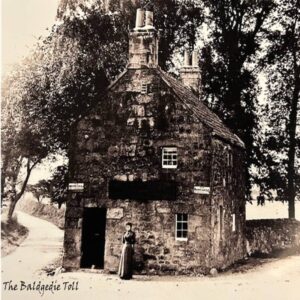
The Life of a Tollkeeper
A tollkeeper was a person who collected road fees from travellers. This old occupation was prominent during the 18th and 19th centuries.
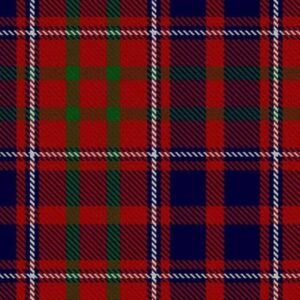
Cameron Surname: Origin, Meaning & History
The Cameron surname has Gaelic origins and it is associated with Clan Cameron, one of the most influential Highland clans.
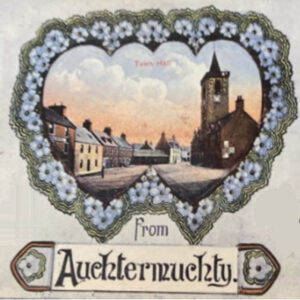
Ancestral Visit to Auchtermuchty, Fife
Auchtermuchty in Fife is known as Muchty to locals. What does Stratheden Whisky, Jimmy Shand and the Proclaimers have in common?
